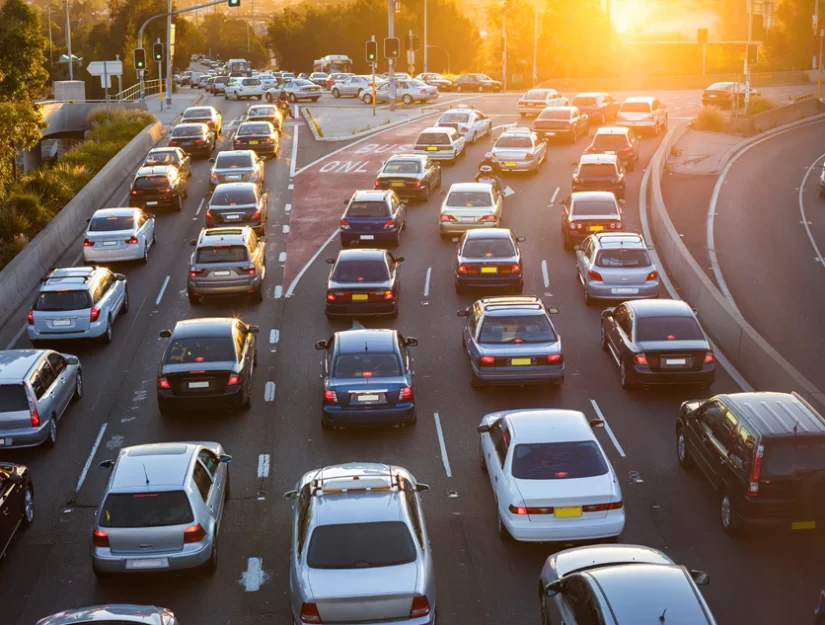Well first, we need to define what ISS (Idle Stop Start) technology is. Idle stop-start technology, also known as start-stop or simply stop-start, is a feature found in some modern vehicles. It is designed to automatically shut off the engine when the vehicle comes to a stop and then restart it when the driver releases the brake pedal or engages the clutch. The primary purpose of idle stop-start technology is to conserve fuel and reduce emissions by preventing the engine from idling unnecessarily, especially in situations like traffic lights or prolonged stops.
The introduction of ISS demanded a new type of battery to accommodate the new technology. Enter, the stop start battery. A stop-start battery, is a type of automotive battery designed specifically for vehicles equipped with start-stop systems.
Stop-start batteries play a crucial role in this process by providing reliable and efficient power to the vehicle’s electrical systems during frequent engine restarts. This includes electrical systems such as air conditioning and heating, windshield wipers, entertainment systems, lights, windows and doors functions and electrical accessories. Unlike traditional automotive batteries, stop-start batteries are specifically designed to handle the higher number of charge-discharge cycles associated with start-stop systems. They are built to withstand the strain of frequent engine restarts and deliver power consistently.
By using a stop-start battery, the vehicle’s electrical systems, including the starter motor, can function optimally, ensuring reliable and quick engine restarts. These batteries often employ advanced technologies such as enhanced lead-acid designs or absorbent glass mat (AGM) technology, which allow for rapid power delivery and endurance during the frequent cycling of start-stop systems.
Additionally, stop-start batteries commonly have higher cold-cranking amps (CCA) ratings, which means they can provide sufficient power even in colder weather conditions. This feature ensures that the engine starts reliably regardless of the temperature outside.
There are a few different types of stop-start batteries commonly used in vehicles with start-stop systems. Here are some of the main types:
• Enhanced Flooded Battery (EFB): Enhanced Flooded Batteries are an improved version of traditional lead-acid batteries. They feature modifications to handle the increased demands of start-stop systems. EFB batteries have enhanced durability and better cycling capabilities compared to standard lead-acid batteries.
• Absorbent Glass Mat (AGM) Battery: AGM batteries are another type of lead-acid battery, but they use a special design where the electrolyte is absorbed in fiberglass mats. AGM technology provides higher power density and faster charge acceptance, making them well-suited for start-stop applications. AGM batteries are known for their excellent performance and durability.
• Lithium-ion (Li-ion) Battery: While less common, some vehicles equipped with start-stop systems may use lithium-ion batteries. Li-ion batteries are lightweight and have high energy density, providing ample power and durability for start-stop operations. They also offer the advantage of faster charging and longer service life compared to traditional lead-acid batteries.
It’s important to note that the specific type of stop-start battery used in a vehicle can vary depending on the manufacturer, model, and region. Different automakers may have their own preferred battery technologies and specifications based on performance requirements and cost considerations.
There are some common signs that your vehicle utilises start-stop technologies. These indicators can be:
• Automatic Engine Shutdown: When you come to a complete stop, such as at a traffic light, a start-stop system will automatically shut off the engine to conserve fuel and reduce emissions. If you notice that your engine consistently turns off when you come to a stop and restarts when you release the brake or engage the clutch, it’s likely that your vehicle has a start-stop system.
• System Indicators: Some vehicles may have specific indicators on the dashboard or instrument cluster that display the status of the start-stop system. Look for symbols or messages related to the system, such as an “Auto Stop” or “Start/Stop” indicator.
• Owner’s Manual: Refer to your vehicle’s owner’s manual. It should provide information about the features and technologies equipped in your specific model, including whether it has a start-stop system.
• Exterior Badging: In some cases, vehicles with start-stop systems may have badges or emblems indicating the presence of this feature. Look for any labels or markings on the exterior of your vehicle that mention “Start-Stop,” “Idle-Stop,” or similar terminology.
If you’re still unsure whether your vehicle has a start-stop system after checking these indicators, just ask us. We’d be happy to let you know which battery suits your vehicle. We are even happy to install it for you.


02 6652 8816
Shop 2, 164 Pacific Highway Coffs Harbour
Mon-Thur 8am-5pm | Fri 8am-4pm | Sat 9am-1pm
Lic. No: MVRL58542 | AU No. AU53845
Terms & Conditions